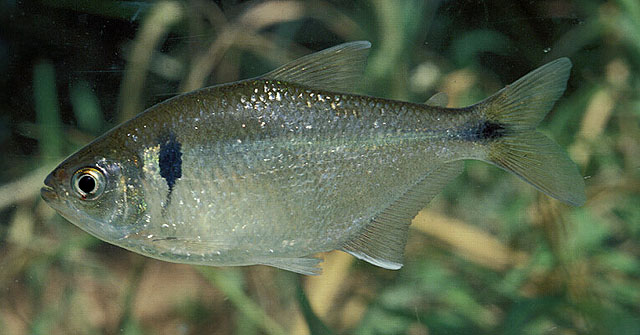| Characidae (Characins; tetras), subfamily: Stethaprioninae |
| 8.1 cm SL (male/unsexed); 10.4 cm SL (female) |
|
benthopelagic; freshwater |
| South America: coastal basins of southeastern Brazil. |
|
|
| Inhabits streams and rivers with sandy to muddy bottom. Forages during the day mingling with schools of similarly sized and looking prey types, such as tetras of the genus Astyanax, and feeds on their scales. The resemblance of this scale-eater with its habitual prey is an example of aggressive mimicry (Ref. 40388). The fish follows closely the intended prey by placing itself obliquely to its rear; strikes at prey's flank with its mouth widely open, the scales being removed during a quick bite. Removed scales are swallowed immediately and the predator resumes schooling with its prey. The fourth dentary teeth, the most important one for scale removal, is already differentiated in juveniles at 1.9 SL. The scale-eating habit may have a primarily social origin through inter-specific aggression. Besides scales, it occasionally takes insects, tiny crustaceans and plant material (Ref. 28733). |
|
Not Evaluated (N.E.) Ref. (130435)
|
| harmless |
Source and more info: www.fishbase.org. For personal, classroom, and other internal use only. Not for publication.

